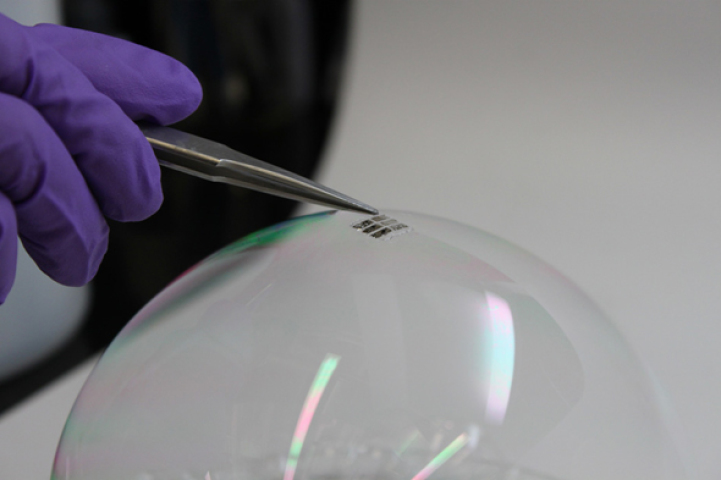Ultra-thin polymer solar cells

Researchers at MIT have used polymers to design the thinnest and lightest solar cells ever created.
Imagine clingfilm, but 10 times thinner…that's how thin parylene, the flexible polymer that the researchers used to manufacture the substrate of the cell's protective layer, is. To demonstrate their prototype's extreme lightness, the scientists placed their solar cell on the surface of soap bubble without popping it. "If you blow on it too hard, it could float away" they warned.
Their prototype of flexible, ultra-thin and light cells could theoretically produce 400 times more electricity, at an equivalent weight, of those currently in use.
This original and almost invisible manufacturing process currently remains at the concept phase but could, according to the researchers, be easy and cheap to implement. These cells could power intelligent textiles, provide power to the batteries of mobile devices, and could serve to equip satellites, spacecraft, future aircraft or electric cars with an inexhaustible power source, without overburdening them.
More information
http://news.mit.edu/2016/ultrathin-flexible-solar-cells-0226





